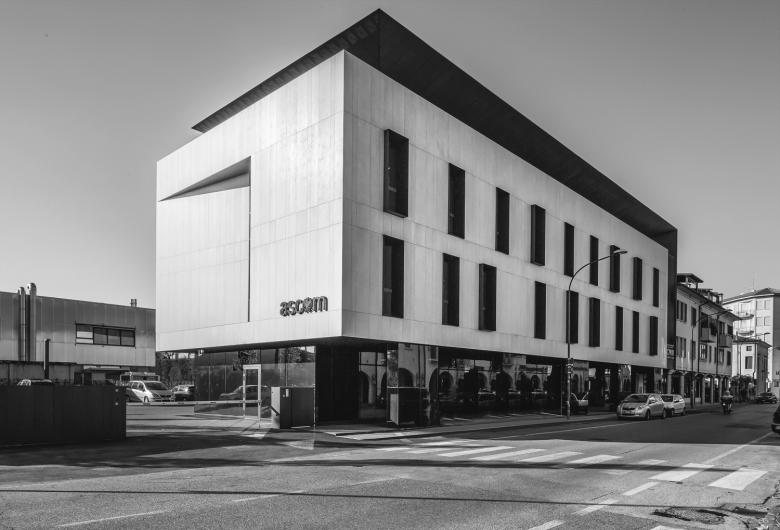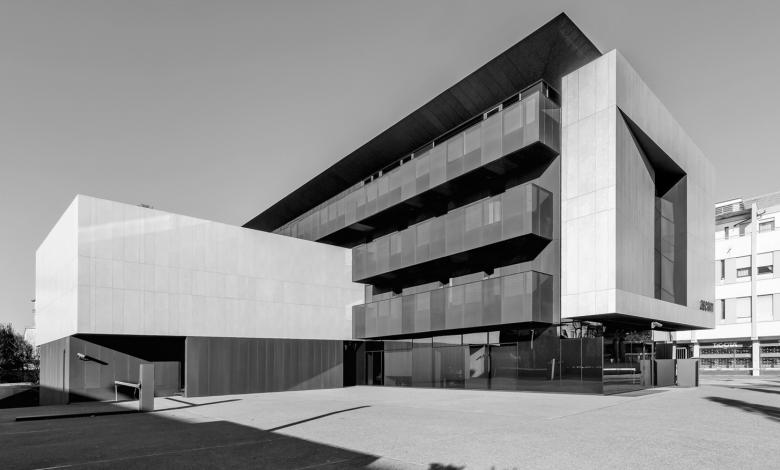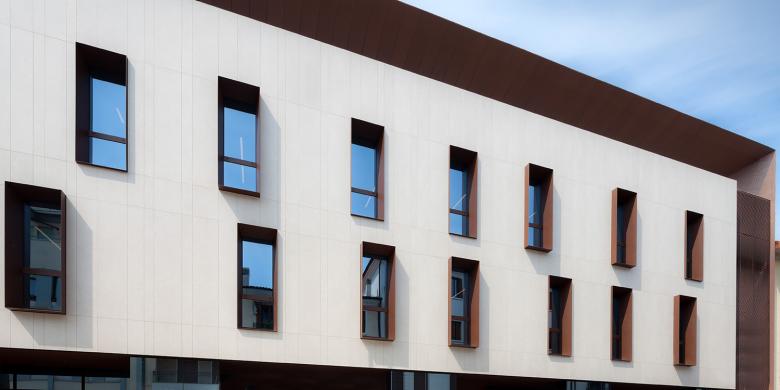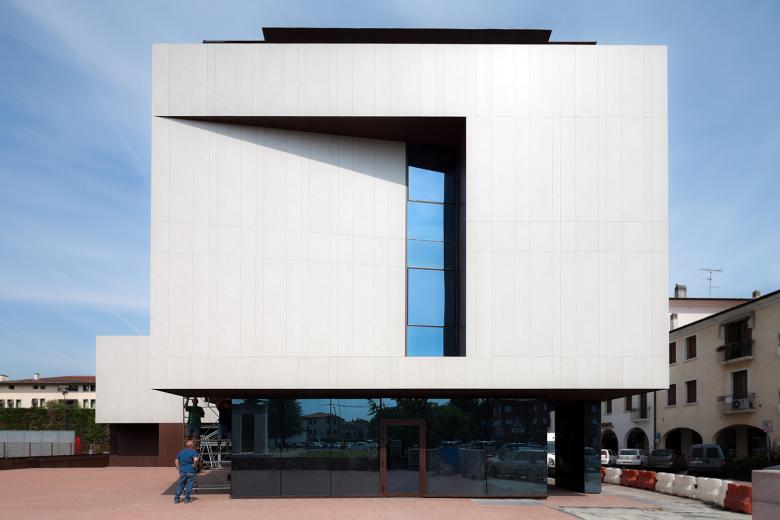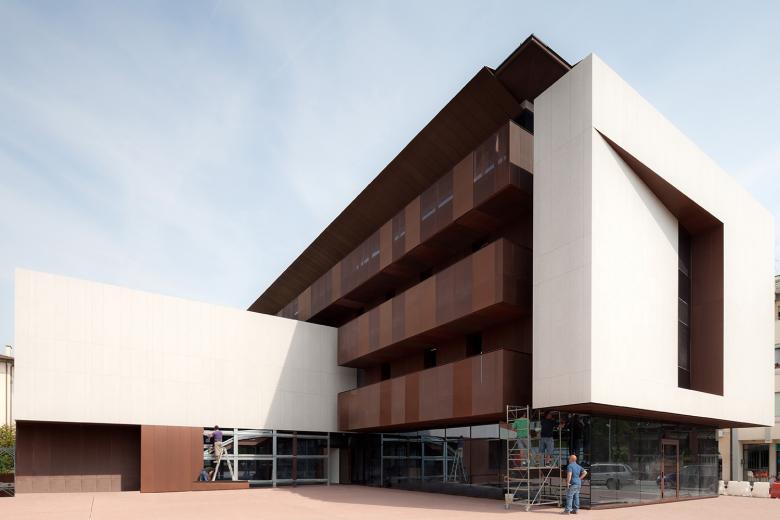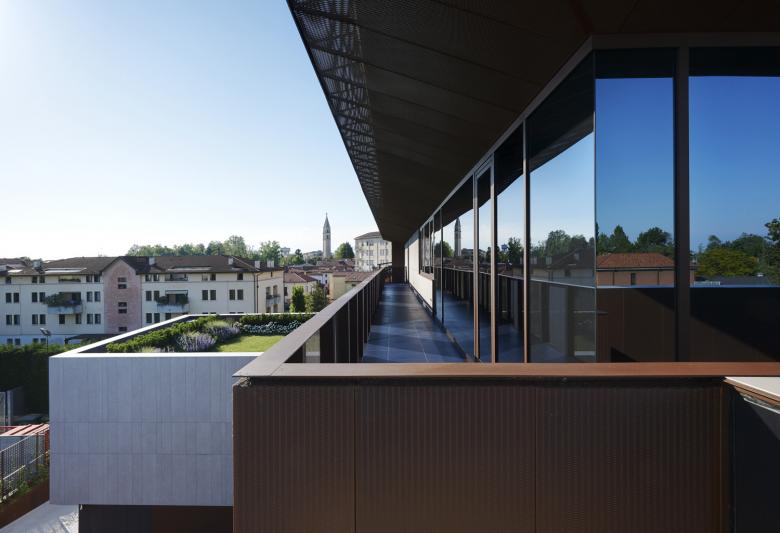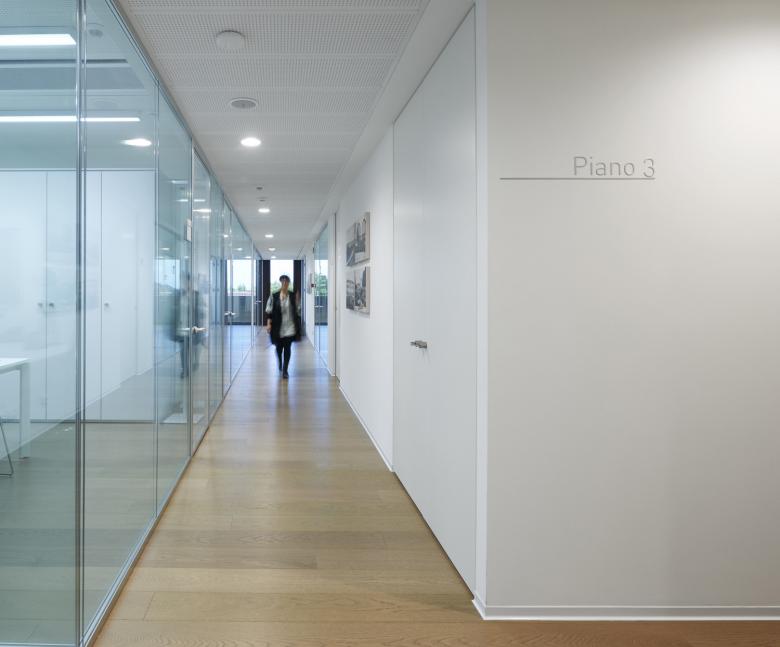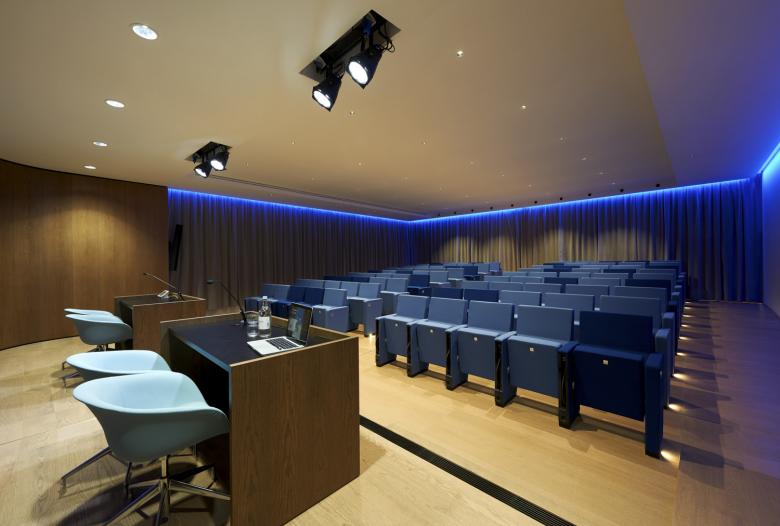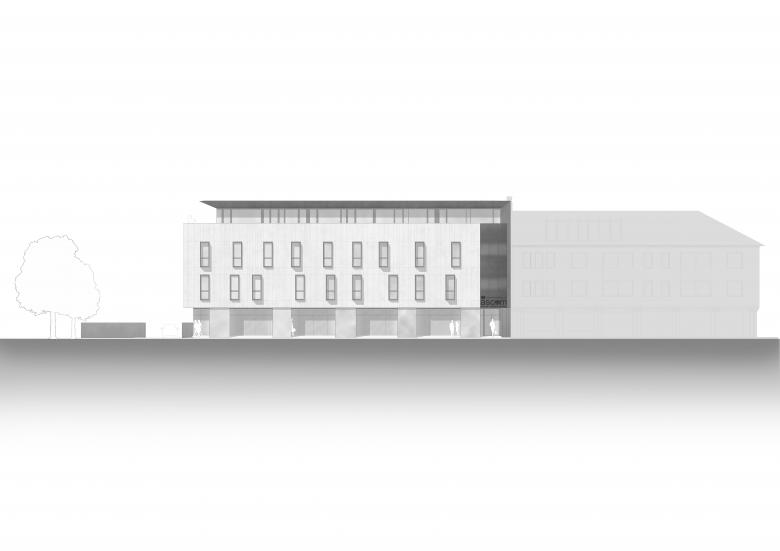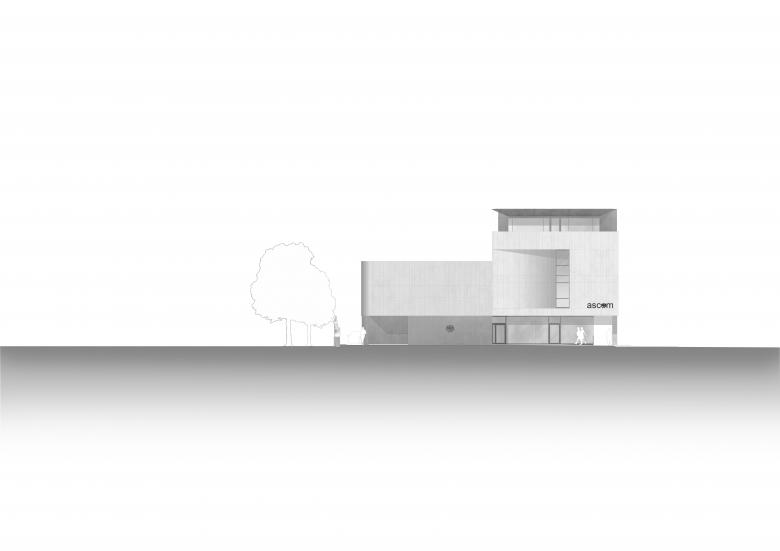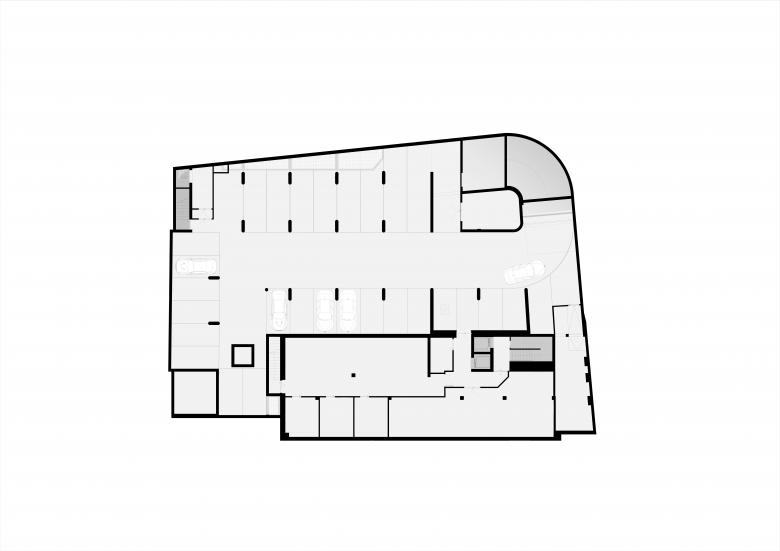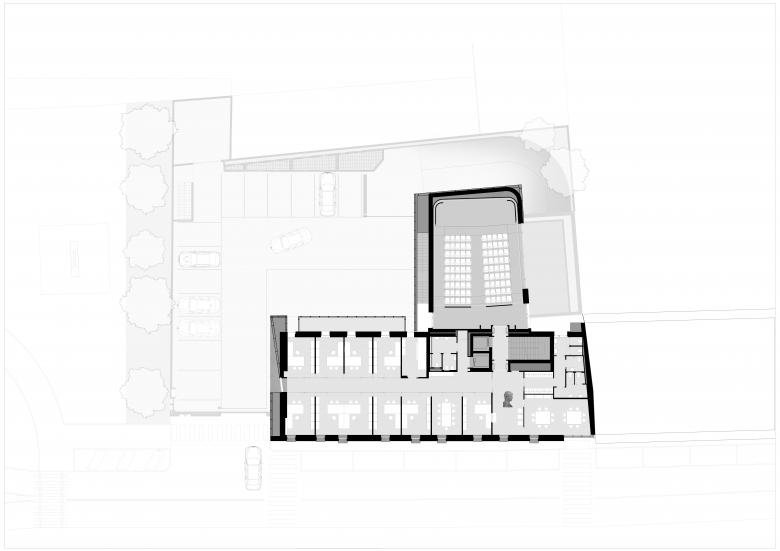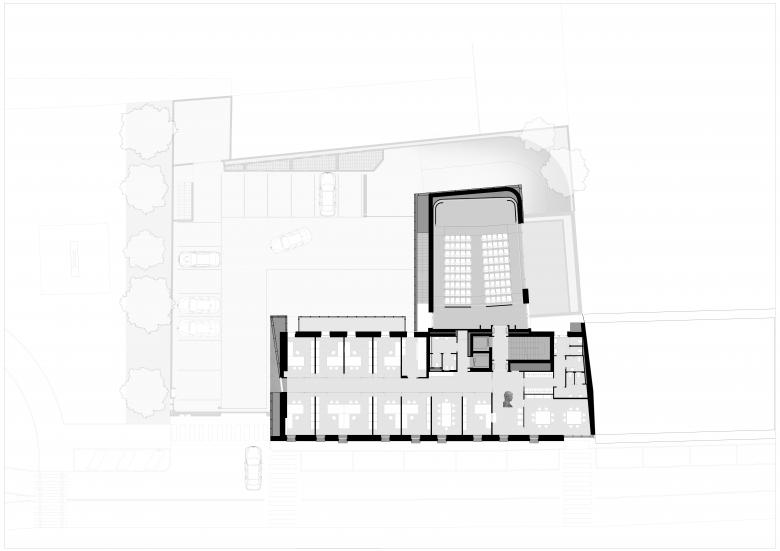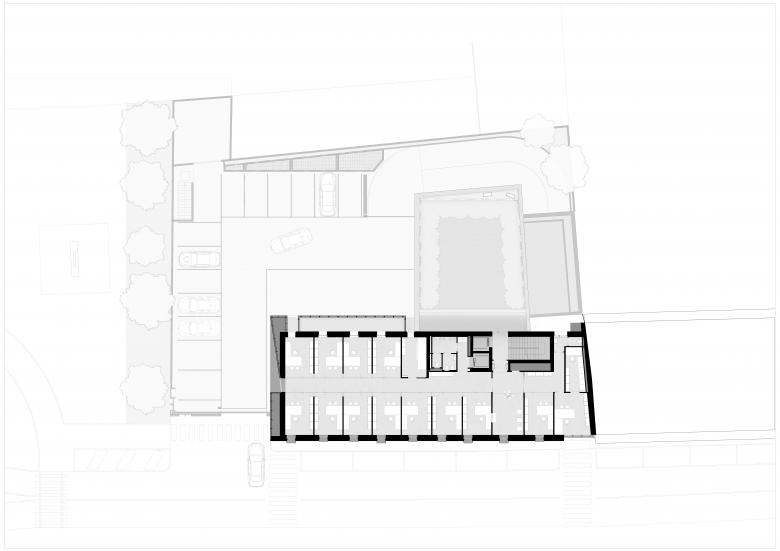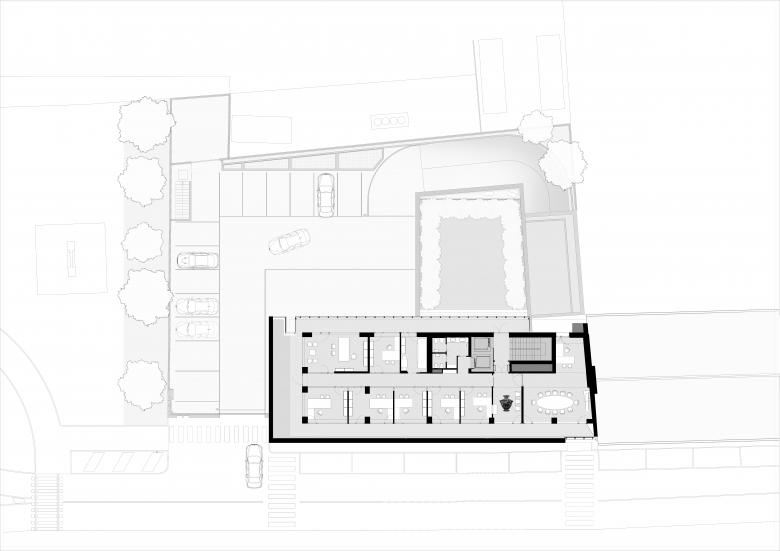Sede Ascom – Oderzo
Oderzo (TV), Italy
- Public Buildings
- Office Buildings
- Learning Centers
- Concert Halls + Auditoriums
- Cultural Centers
- Conference + Congress Centers
- Exhibition / Stage design
- Furniture / Product
- Infrastructure
- Architects
- Gherardiarchitetti
- Location
- Oderzo (TV), Italy
- Year
- 2017
- Client
- Sedacom srl
- Team
- arch. Edoardo Gherardi, arch. Nicola Frigo, arch. Marco Gennaro, arch. Alessandro Gazzola, arch. Filippo Calzavara, arch. Mirko Cagnin
- Main contractor
- CEV spa
The building is part of a prestigious historical context, Oderzo, an ancient town of Paleovenetian origin in the province of Treviso.
Work began in 2012, and after a few months excavation revealed countless archaeological finds.
These scenarios and history reinforced the project's concept of mending the historic centre and the entrance to the city. The building, in fact, opens like a door on the south-east front. To the north, along the access road, it is more severe, marked by a geometric rhythm alternating the fullness of the ceramic cladding with the voids of the steel frames, forming a protective shield. To the south it opens onto the inner courtyard and reveals its metal mesh, reminiscent of a centurion's armour. The interior is enriched by the luminosity of the glazed walls that mark out the spaces, and hosts museum installations that enhance the historical/geographical context of Opitergino in a building like a memory.
On an area of 1500 square metres, the building above ground covers about half of it. The building consists of two volumes, the first of 4 floors for the management area, the second of 2 floors for the training area and a 90-seat auditorium with exclusive access. The basement, in addition to the technological stations and the automated archive, houses 37 parking spaces, in addition to the 13 parking spaces in the outdoor area.
The anti-seismic structure is in reinforced concrete with lightened slabs cast in situ. The slab foundation has 87 piles placed in correspondence with the greatest loads.
The building envelope consists mainly of 3 construction systems for the vertical closures:
1. continuous glass façade with thermal break aluminium profiles and double glazing (ground floor and third floor)
2. ventilated façade consisting of EPS panels with graphite and a covering of extruded 3 mm ceramic slabs glued to a metal structure (first and second floor)
3. ventilated façade consisting of EPS cladding with graphite and a covering of painted expanded metal panels. (ground, first, second and third floor)
With regard to the horizontal closures we find:
1. basement roofing slab: ground floor uncovered car park in porphyry grit
2. floor slab of first, second and third floor offices: practicable terrace
3. floor covering first floor auditorium: garden terrace
4. floor covering third floor: photovoltaic system with a total power of 70 kW
The architectural project involved customising the materials and surfaces of the cladding, as well as the interior furnishings, as if to create a made-to-measure suit for the project.
The new Ascom headquarters is an example in terms of sustainability. We are talking about a class A4 building, with low thermal requirements and reduced dispersion thanks to an extremely insulated shell. Building systems such as the ventilated façade and the garden roof contribute to the insulation and healthiness of the walls and floors.
There is also high-level technological equipment, which contributes to establishing it as an example of very high energy efficiency.
The mechanical system can be divided into different types. In the offices, 67 chilled beams have been installed, perfectly integrated ceiling terminals that guarantee heating, cooling and air exchange with excellent results in terms of comfort, well-being and energy saving. Minimal noise levels, high standards of hygiene, no annoying draughts, uniform temperature in the room and presence sensors are just some of the features of this technology. The primary air is treated by two AHUs operating in parallel.
The training rooms and the auditorium have a mixed system, i.e. ceiling radiant panels supplemented by an auxiliary distribution, dehumidification and air exchange system. Here too, presence sensors regulate the system according to the number of people in the rooms.
The hot/cold fluid generation system consists of 3 geothermal heat pumps with total recovery fed by a well pump and connected in parallel.
The electrical system, on the other hand, is managed by a BMS (Building Management System) via BUS communication. In particular, it controls internal and external lighting, which is automatically adjusted according to the sunlight, awnings and window motors, security (access control and number plate reader) and anti-intrusion.
Related Projects
Magazine
-
Winners of the 5th Simon Architecture Prize
1 week ago
-
2024, The Year in …
2 weeks ago
-
Raising the (White) Bar
2 weeks ago
-
Architects Building Laws
2 weeks ago
